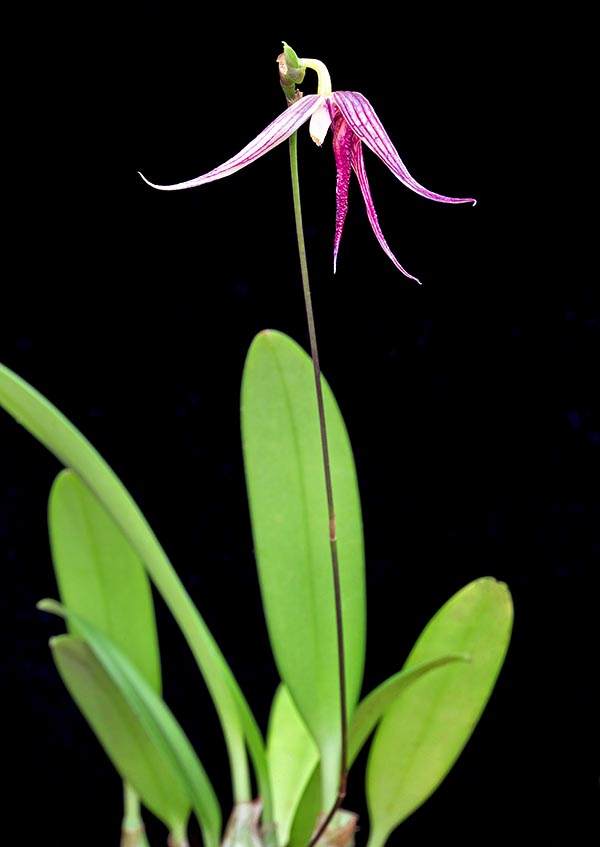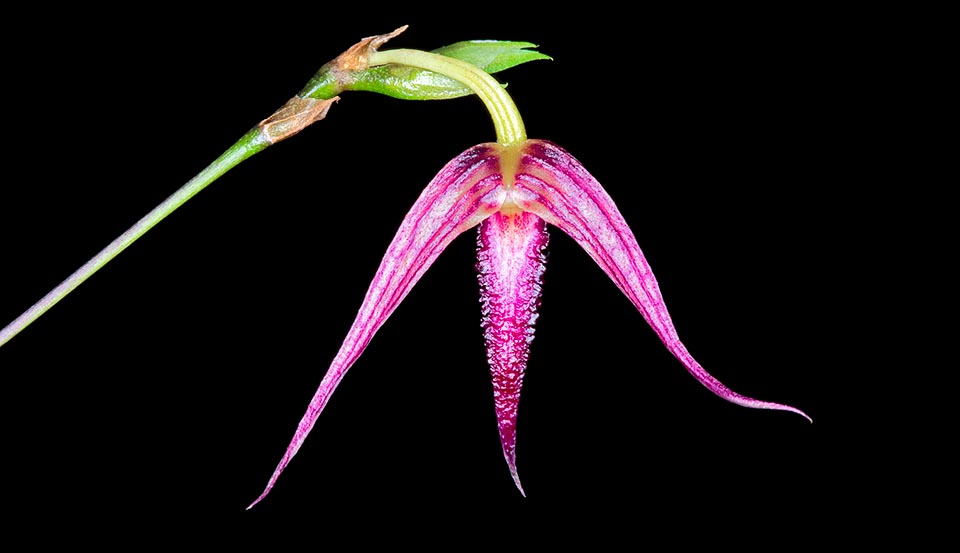Family : Orchidaceae

Text © Pietro Puccio

English translation by Mario Beltramini

The Bulbophyllum digoelense is a New Guinea epiphyte with ovoid pseudobulbs of about 2 cm and even 16 cm long leaf. They grow spaced 2-5 cm on a creeping rhizome rooting at the nodes © Giuseppe Mazza
The species is native to New Guinea where it grows as epiphyte in the humid forests at low altitudes.
The neme of the genus is the combination of the Greek substantives “βολβός” (bolbos) = bulb and “φύλλον” (phyllon) = leaf, with reference to the leaves growing at the apex of the pseudobulbs; the specific Latin name refers to the locality near to the river Digul (Digoel in Dutch) where has been found the type species. The Bulbophyllum digoelense J.J.Sm. (1911) is an epiphytic species with ovoid pseudobulbs, about 2 cm long, spaced of 2-5 cm on a creeping rhizome rooting at the nodes, provided at the apex of an oblong leaf, 14-16 cm long and about 3 cm broad, coriaceous, intense green and glossy above.
Inflorescence from the base of the pseudobulb, 30-50 cm long, bearing drooping flowers, of 5-6 cm of diameter, opening gradually once at a time for a long period.
Lanceolate sepals with long pointed apex, of whitish colour with purple veins, 3-3,6 cm long, tri-toothed quadrangular petals about 1 cm long, with central tooth long and filiform, trilobed labellum 2,7 cm long and tiny lateral lobes and lanceolate median lobe with long pointed apex, grooved longitudinally, of dark purple colour, warty.
It reproduces by seed, in vitro, and by division with each section provided of at least 3-4 pseudobulbs.
Bulbophyllum which distinguishes thanks to its big flowers if compared to the plant produced sequentially for months, requires a semi-shaded position, medium-high tempera- tures, 22-32 °C in summer, slightly cooler in winter with night lowest ones not under the 14 °C, high humidity, 70-85%, and constantly moving air.
The waterings must be frequent in summer, more spaced in winter, allowing the substratum to partially dry up before giving water again, utilizing rain water, demineralized or by reverse osmosis.
Weekly fertilizations in summer, monthly in winter, utilizing a hydrosoluble balanced product, with microelements at ¼ the dosage shown on the package.

The 30-50 cm long inflorescence from the pseudobulb base, haf drooping flowers of 5-6 cm of diameter that open sequentially, once at a time, for long time © G. Mazza
The species is shown in the appendix II of CITES (species whose trade is internationally ruled).
→ For general notions about ORCHIDACEAE please click here.
